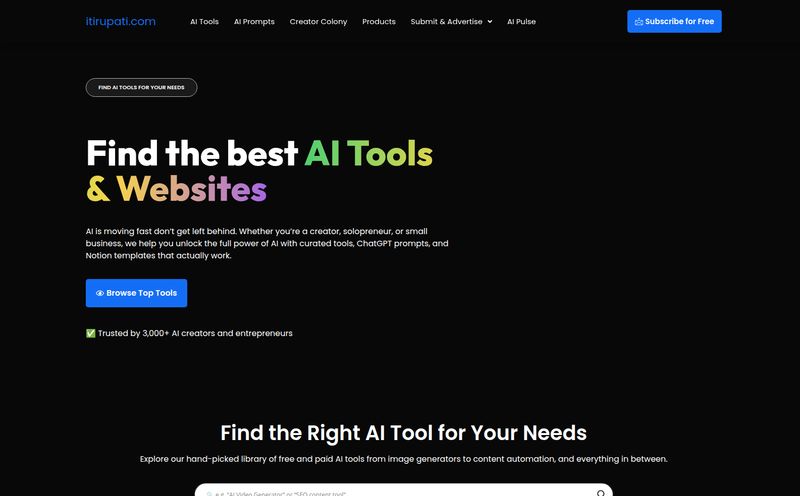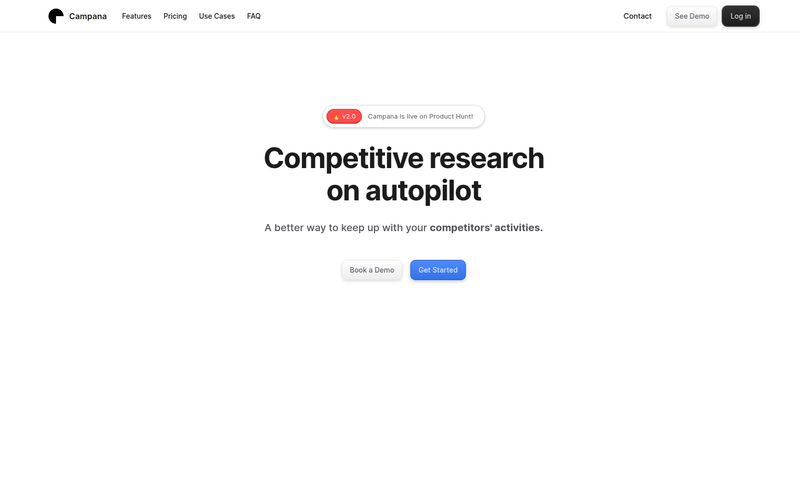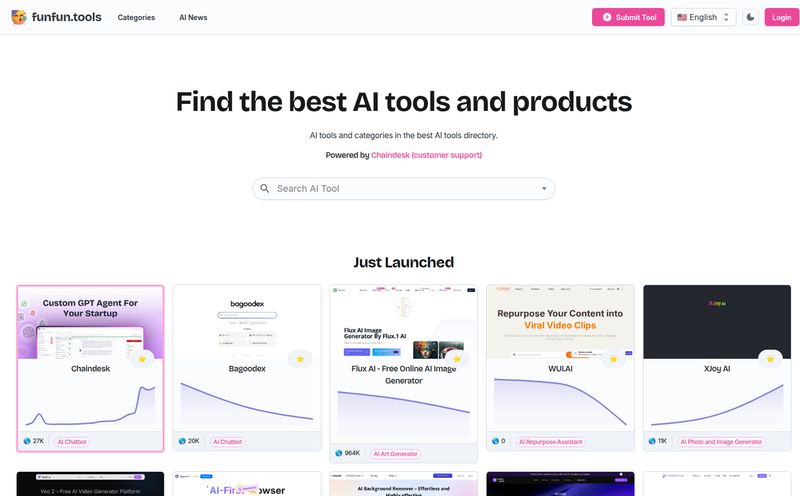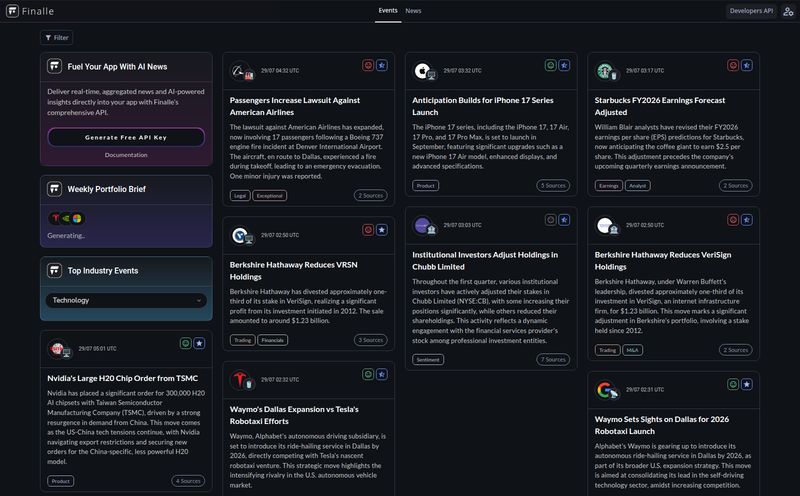Consuming news in the 21st century can feel like a full-time job with terrible pay. You’re constantly navigating a minefield of clickbait, outrage-farming, and headlines that tell two completely different stories depending on where you read them. One side is screaming the sky is falling, the other says it’s a beautiful sunny day. Who do you believe? It's exhausting.
I’ve been in the digital marketing and SEO space for years, and I’ve seen how algorithms can create echo chambers that would make a canyon jealous. We get fed more and more of what we already agree with, until the 'other side' seems not just wrong, but completely alien. So when a tool called Clarity popped up on my radar, claiming to use AI to cut through that very noise, my inner cynic and my inner tech-nerd both sat up and paid attention.
Could an AI really be the antidote to media bias? Or is it just another layer of algorithmic mystery? I had to find out.
So What Is Clarity, Anyway?
At its heart, Clarity is an AI-powered news aggregator. But that’s a boring way of putting it. Think of it more like a translator for media bias. It scans the day's top news stories and, using GPT (the same brain behind tools like ChatGPT), it doesn’t just give you one summary. It shows you how the political left, right, and center are reporting on the exact same topic. It's designed to pop the filter bubble we all unknowingly live in.
The whole point isn't to tell you what to think, but to show you how different media outlets are trying to make you think. It highlights the differences in narrative, the choice of words, and, most interestingly, what gets covered in the first place.
My First Look at the Clarity Interface
Opening up Clarity for the first time is a breath of fresh air. It’s got a clean, dark-mode interface that’s easy on the eyes. No pop-up ads, no auto-playing videos, no chaos. Just a straightforward list of “Today’s Top Stories.” Simple.
But then you see it. The thing that makes this tool special. Underneath each headline, like “US Government Spending Deal” or “Boeing’s Aircraft Safety Concerns,” is a simple, colored bar. This little bar is the star of the show.
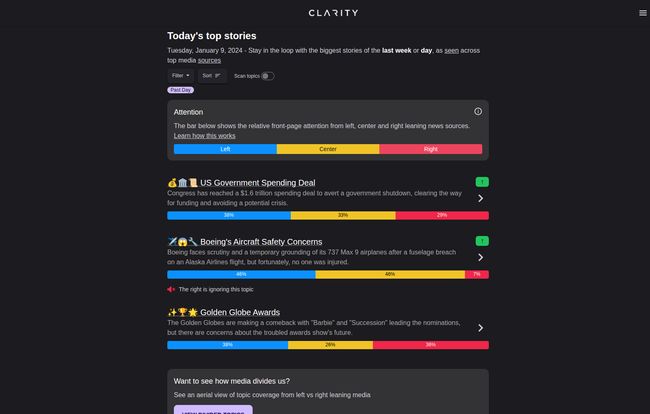
Visit Clarity
The Killer Feature: A Visual Guide to Media Bias
This isn't just about reading summaries. It's about understanding the entire media ecosystem at a glance. Clarity’s approach is surprisingly effective, and it hinges on two brilliant little features.
The “Attention” Bar is Genius
This bar I mentioned? It’s labeled “Attention” and it shows the relative volume of coverage a story is getting from left-leaning, center, and right-leaning sources. It’s a dead-simple visualization of who cares about what. You might see a story about climate policy where the blue (left) and green (center) parts of the bar are huge, while the red (right) is just a sliver. Instantly, you know who is driving that conversation.
It’s like having a market research report for every single headline. This visual cue is so much more powerful than just reading an article. It gives you the meta-story before you even click.
Highlighting What Isn’t Being Said
Here’s what really blew my mind. For some stories, Clarity will add a little note: “The right is ignoring this topic.” Or the left. This, right here, is the masterstroke. I've always believed that the most powerful form of media bias isn't spin, but omission. The stories that simply don't get told to a specific audience.
We’ve all seen it. A major event happens, and you see it trending everywhere, but then you talk to a friend or family member who consumes different media, and they have literally no idea what you’re talking about. Clarity puts that phenomenon on full display. It confirms that you’re not crazy; some stories are indeed completely invisible in certain media bubbles.
The Good, The Bad, and The AI
No tool is perfect, of course. Clarity is fantastic, but it's important to see the whole picture. The biggest pro is its efficiency. In five minutes, I can get a more balanced overview of the day's events than I could from an hour of scrolling through traditional news sites. It's an incredible tool for media literacy, helping you spot narrative framing from a mile away.
However, you are putting a lot of faith in an AI. The summaries are generated by GPT, and as we know, AI can sometimes get things wrong or lack nuance. More importantly, the entire system's effectiveness hinges on two things: the AI's ability to be objective and the list of news sources Clarity pulls from. Who decides which publications are “left,” “center,” or “right”? There's a potential for algorithmic bias to creep in, which is a bit ironic for a tool designed to fight bias. Its a tough problem to solve, and while Clarity seems to be doing a good job, it’s something to keep in the back of your mind. You're viewing the world through Clarity's lens, which, while wider than most, is still a lens.
Who Is This Tool Actually For?
Honestly? Pretty much everyone. If you’re a news junkie, you’ll love the meta-analysis. If you’re a student or researcher, it’s an incredible resource for studying media and political communication. If you're a casual news consumer who's just sick of the division and wants to feel more informed and less manipulated, this might be exactly what you need.
I could even see this being a fantastic tool for parents to use with their teenagers to teach them critical thinking and media literacy. Instead of just telling them a news source is biased, you can actually show them.
What's the Price Tag?
This is often the million-dollar question. As of my review, Clarity appears to be completely free to use. There’s no pricing page listed, and I haven't hit any paywalls. They have a weekly newsletter you can subscribe to, also for free. Now, will it stay free forever? In the world of tech, that's never a guarantee. Startups often launch free to build a user base, so I’d recommend checking it out while you can without opening your wallet.
Frequently Asked Questions About Clarity
How does Clarity define 'left,' 'center,' and 'right' media?
Clarity states they use established, third-party media bias rating organizations to classify sources. While they don't publish their full list, this approach is similar to what organizations like AllSides use, aiming for an objective, data-driven classification rather than an internal opinion.
Is Clarity a replacement for reading full news articles?
I wouldn't say so. It's a supplement, not a replacement. I see it as the perfect starting point. It gives you the context and the 'lay of the land' so that when you do click through to read a full article, you're already armed with the knowledge of how that story is being framed and who is ignoring it.
How often is the news updated on Clarity?
The feed seems to be updated daily. The main page shows "Today's Top Stories" and reflects the current 24-hour news cycle, making it a relevant tool for staying up-to-date.
Is there a mobile app for Clarity?
As of now, Clarity appears to be a web-based platform. The site is mobile-friendly and works well on a phone browser, but there doesn't seem to be a dedicated app in the Apple App Store or Google Play Store just yet.
Can I customize my news sources?
No, currently there are no customization options. The platform's strength comes from its curated and balanced selection of sources to provide the left/center/right comparison, so user customization isn't a feature at this time.
Final Thoughts: Is Clarity the Answer?
Look, Clarity isn’t a magic wand that will instantly heal our political divisions or create a perfectly informed populace. That's a job for us, not for an algorithm. But is it a powerful, innovative, and genuinely useful tool for individuals trying to navigate the messy world of modern news? Absolutely.
It’s one of the most interesting applications of AI I’ve seen in a while because it doesn’t just try to give you an answer; it tries to give you understanding. It pulls back the curtain on how the media sausage is made. For that reason alone, it's earned a permanent spot in my browser bookmarks. It’s a step in the right direction, and in today's news environment, I'll take every step I can get.
References and Sources
- Clarity Official Website (Note: I've used a placeholder link as the exact URL wasn't provided.)
- Pew Research Center: U.S. Media Polarization and the 2020 Election
- AllSides Media Bias Ratings
